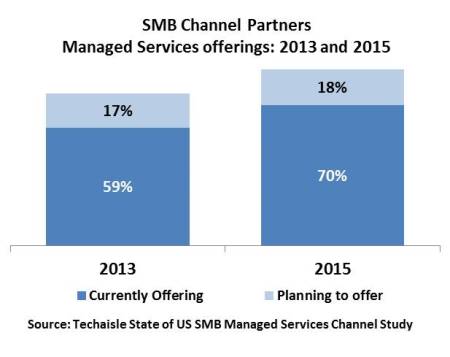What is the current state of managed services in the channel?
Techaisle’s SMB global channel partner research shows that in the US 71% are currently offering one or more managed services solutions and another 18% are planning to offer managed services within one year. Techaisle believes that the channel is at the beginning of a migration from generalist to specialist firms that will play out over the next few years. With that in mind, it is fair to ask, how widespread is managed services delivery today?
Figure below, taken from Techaisle’s US SMB Managed Services Channel Study illustrates the proportion of channel partners that currently offer managed services to SMBs. Unsurprisingly, 100% of MSPs report that they do so. What might be more surprising is the extent to which channel members with other core business models provide managed services to their SMB clients. Roughly two-thirds of VARs and SPs, and 80% of SIs, offer managed services to SMB customers. IT consultants are less likely to do so, but here, too, one-third of firms are already using managed services delivery to support SMB clients.

Above data demonstrates that there has been and continues to be substantial take-up in managed services as a business delivery model outside of MSPs. This will help to build SMB customer awareness of the benefits of the approach and comfort with managed services as a delivery model. It will also have a positive impact on the channel generally, as experience with managed services helps build channel familiarity with recurring revenue models which will be important in other important channel business areas, such as cloud.
Comfort level with – and profitability of – managed services
Clearly, SMB channel members of many types are investing in developing managed services capabilities. This trend begs the question, to what extent are these firms benefitting from these investments?















